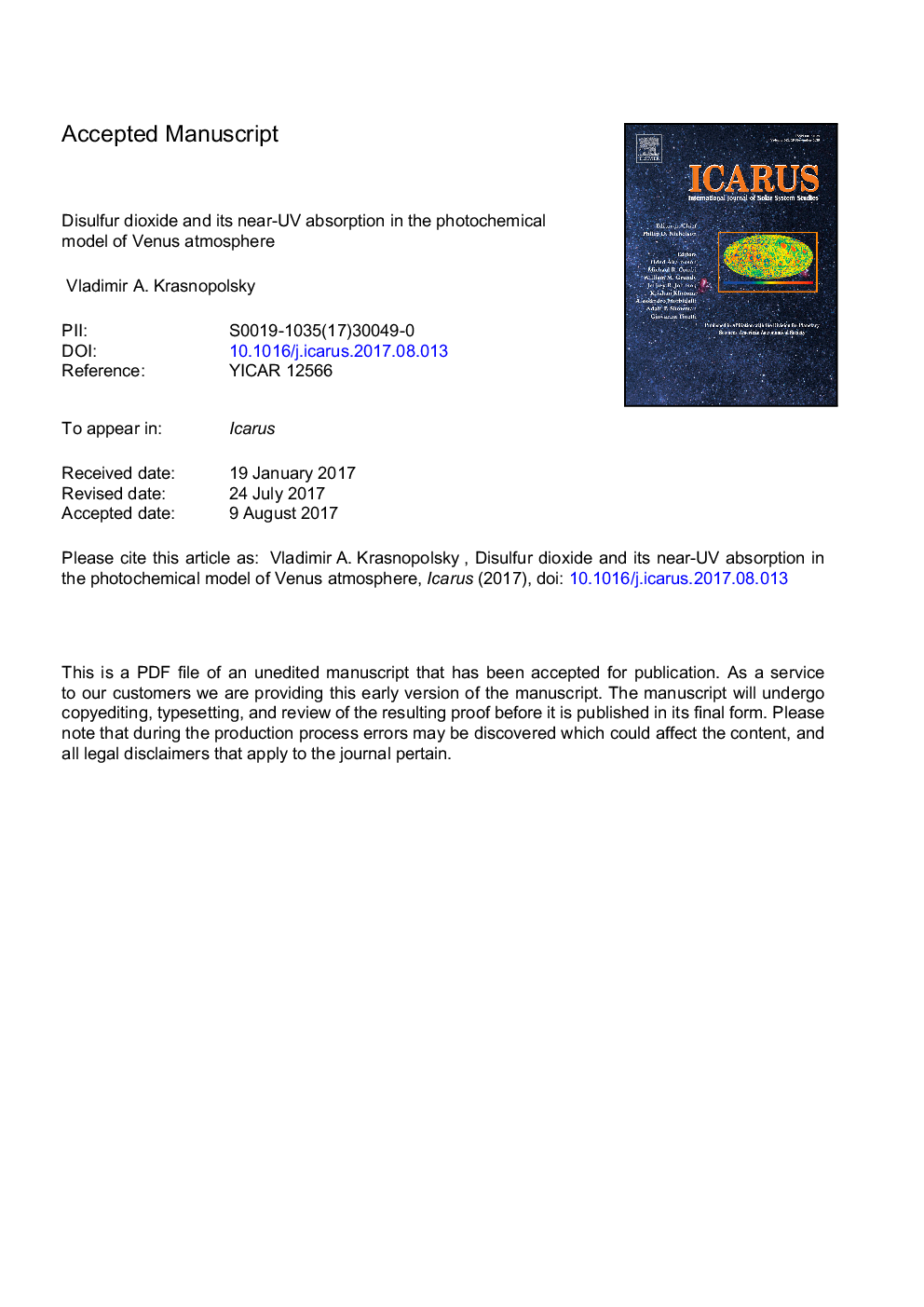| Article ID | Journal | Published Year | Pages | File Type |
|---|---|---|---|---|
| 5487230 | Icarus | 2018 | 13 Pages |
Abstract
The photochemical model of Venus atmosphere at 47-112â¯km (Krasnopolsky 2012, Icarus 218, 230-246) is updated using the recent calculations of production and photolysis of the S2O2 isomers by Frandsen et al. (2016, Geophys. Res. Lett. 43, 11146-11155) and improved densities of H2O, OCS, and H2 at 47â¯km from the chemical kinetic model by Krasnopolsky (2013, Icarus 225, 570-580). SO recycles in the termolecular association of S2O2 followed by its photolysis, while it was lost in these processes in the previous model. Consequences of this change to balances of sulfur species are discussed. The basic model and four versions with small deviations in eddy diffusion and SO2 abundance at the lower boundary are calculated. The models agree with the observed abundances of CO, H2O, SO2, SO, OCS and their variations; some differences are discussed. Volcanism is not required to explain variations of sulfur species that may be induced by minor changes in atmospheric dynamics. Three methods are applied to evaluate S2O2 abundance sufficient for the NUV absorption on Venus, and the derived S2O2 exceeds the model value by two orders of magnitude. The SO profile by Na et al. (1994, Icarus 112, 389-395) with 12â¯Â±â¯5â¯ppb from 64 to 95â¯km agrees with the model above 75â¯km, being significantly greater below this altitude. If SOâ¯ââ¯12â¯ppb were near 64â¯km, then the calculated S2O2 absorption would contribute to but not completely explain the NUV absorption.
Related Topics
Physical Sciences and Engineering
Earth and Planetary Sciences
Space and Planetary Science
Authors
Vladimir A. Krasnopolsky,
